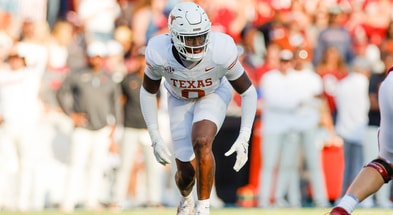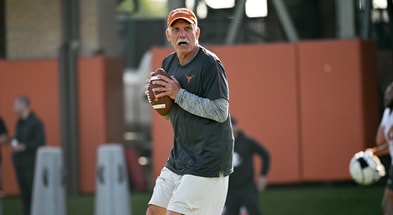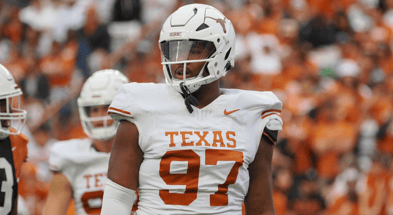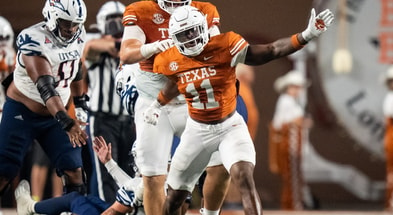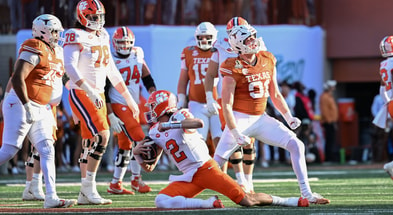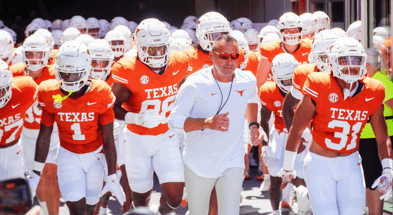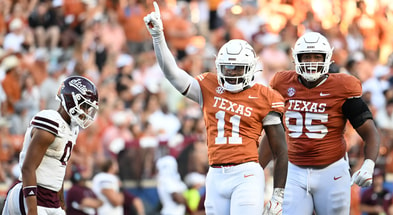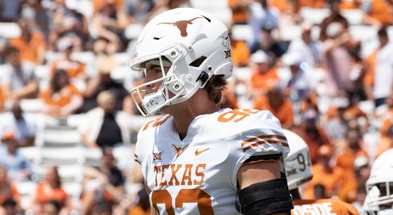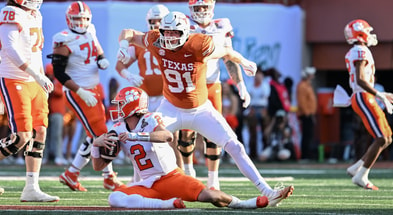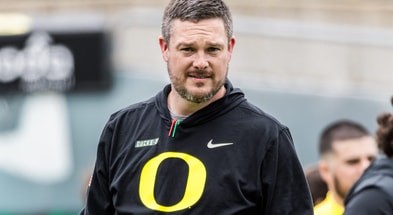Texas faces tough choices on revenue sharing as House v. NCAA ruling looms

There remains an incredible amount of uncertainty about the future of college athletics due to the continued postponing of the approval of the House v. NCAA case settlement. Schools have plans ready to be put into action on July 1 should Judge Claudia Wilken approve the settlement, but deadline after deadline has been shifted and the next projected day of reckoning for the case is June 27.
[Sign up for Inside Texas TODAY and get the BEST Longhorns scoop!]
College athletic directors like Texas’ Chris Del Conte are in a state of limbo decision makers don’t like to find themselves in. He’s not sure when exactly he’ll be able to start offering “publicity rights,” more commonly known as revenue sharing, to the University of Texas’ student-athletes. All he can do is plan on a big ‘what-if’ finally turning into reality once Wilken says yes to the settlement.
However, there are some things he can plan for. He knows that there will be a $20.5 million cap on what schools can share with athletes. He knows that the Southeastern Conference will require $2 million of that cap be in the form of “Alston payments,” which give about $6,000 annually to student-athletes.
Now with $18.5 million to possibly work with, Del Conte will apply a percentage split to future payments that looks like the model House has ready to go for back payments: 75 percent of the publicity rights money to go to football, 15 percent to go to men’s basketball, five percent to go to women’s basketball, and five percent to be distributed among the remaining sports.
Five percent, in the case of Texas, is meant for sports like Mike White’s softball program, which finds itself in the championship series of the Women’s College World Series in Oklahoma City starting tonight. It’s also meant to cover Jim Schlossnagle’s baseball program, Bob Bowman’s swimming and diving programs, Edrick Floréal’s track teams, Jerritt Elliott’s volleyball program, and all of golf, tennis, beach volleyball, rowing, and soccer.
Determining how that five percent is split is no easy task for any athletic director, but especially at a school like Texas that prides itself on winning Directors’ Cups and contending for national championships in all its athletic endeavors.
One method Texas will utilize to lessen the difficulty of that problem is to fully fund every sport up to its new scholarship limit. This was announced by Del Conte in February at his Texas Athletics Town Hall. The Longhorns will go up to the limit for each sport so no other competitor can say they dedicate more scholarship resources than Texas.
That still doesn’t solve all the problems. How will Texas determine which sports get a piece of the House pie?
Del Conte has a plan in place.
“In the other sports, we’re going to have a spattering,” Del Conte said last week in Destin for SEC Spring Meetings. “We’re going to honor that.”
While he didn’t say which sports would garner pieces of the remaining five percent, he did put a possible number of sports funded into the public sphere.
“It may be more than three sports, it could be four sports,” he said.
Texas has made it known that they are in full support of athletes receiving “real NIL” in their opportunities outside of revenue sharing. To the power-brokers in Bellmont and in the Tower, “real NIL” means Bijan Robinson starting his own mustard company. It means Arch Manning signing deals with Red Bull and Vuori. It mean’s volleyball star Madisen Skinner signing a deal with H-E-B. Track and field’s Sam Hurley has over 1 million Instagram followers, more than 3.5 million TikTok followers, and 165,000 subscribers on YouTube.
That’s not to say Texas hasn’t supported collective-driven NIL funding, but there’s a preference for real NIL.
That’s something Texas hopes continues in the House era, with stars from all sports from football on down capitalizing on business partnerships available to UT athletes in the Austin metropolitan area. Those deals will have to abide by certain rules in the House landscape, which presents its own host of issues.
Top 10
- 1New
Tony Vitello
On Arkansas taunt
- 2
Paul Finebaum
Reacts to House vs. NCAA settlement
- 3Trending
NSFW taunting
Arkansas, Tennessee gets heated
- 4Hot
Greg Sankey reacts
House vs. NCAA Settlement
- 5
Landmark Approval
House vs. NCAA Settlement
Get the On3 Top 10 to your inbox every morning
By clicking "Subscribe to Newsletter", I agree to On3's Privacy Notice, Terms, and use of my personal information described therein.
But there aren’t superstars like Skinner and Hurley up and down the volleyball and track rosters. Some student-athletes are just Texas Longhorns at this juncture without much more increased marketability. Their maximum potential earnings could come from revenue sharing, at least to start their careers. And the pie that is to be split is already small enough as it is. Nearly 20 sports have to split five percent. And Del Conte already put it out there that it won’t be 20 that have to split the five percent, but rather around three or four.
The fully funded scholarships do help, especially in men’s sports like baseball, track, tennis, and golf that used to split a handful of scholarships among the whole team. But there will be a pitcher that wants a bigger, and likely deserved, chunk at some point. There will be a golfer who wants something to make it more palatable to spend a year at Texas before trying to get his tour card.
Del Conte is paid handsomely to make the tough decisions. Which sports get House distributions is one of them.
“The thing about us and one of the things I’m really proud of is at the University of Texas, we’re good in all sports,” Del Conte said. “I was the first one to come out and say we’re going to be great in everything we do. We’re fully funding all of our scholarships to the roster limit. For us, that’s a $10 million expense. We’re good at men’s swimming. We’re good at women’s swimming. If it goes right, we’re going to win our fourth Directors’ Cup. We want to be great at everything we do. We want to offer opportunities for everybody. Being good in every athletic event is great.”
It’s hard to see baseball getting boxed out considering it’s the most successful men’s major sport on the 40 Acres. Similar applies for volleyball, which has won three national championships under Elliott. From here, hard decisions have to be made. Between sports like swimming, softball, rowing, and track, all four of which have competed for or won national titles in the past four years, not every sport can get a piece.
And from here, competition presents an issue. At Oklahoma, for instance, the Sooners have a similar hierarchy with football, men’s basketball, and women’s basketball. But the fourth most popular sport, and maybe arguably the third most popular sport in Norman, is the softball program. Oklahoma athletic director Joe Castiglione isn’t going to let Patty Gasso’s program fall by the wayside. That opens up the possibility that OU will provide more House publicity rights dollars to its softball team than, say, Texas.
This is just one example of above-table market competition.
“Since we’re really good in every sport, other schools are not as good in this sport but they’re really good in that,” Del Conte said. “They’re going to overinvest in that.”
For Texas, choosing the programs to feed House dollars is no easy decision. But this is still, in effect, on hold as the college sports world waits for Wilken’s approval. It’s just part of the ever-shifting landscape Del Conte has to assess as he’s making tougher and tougher decisions about UT athletics’ future.
[Order THE LONGHORN ALPHABET today and teach your little ones the A to Z’s of Texas Football!]
“There’s a lot of what if’s because we’re in this limbo land,” Del Conte said.
